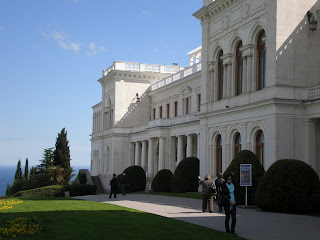Ukraine's Future
The Day After: The return to Kyiv and finally, to Rhode Island, was a whirlwind that included a 26- hour trip between Hotel Rus in Kyiv to the airport in Providence. It's taken me another full day to unwind and although processing all that transpired in the past two weeks will take longer, here are my initial thoughts.
Ukraine's vivid culture is evidenced throughout Kyiv and Crimea. However, it is a newly independent state, a toddler crawling away from it's soviet past. Market capitalism has not benefited the masses yet and this is evidenced in poorly paid teachers and other workers, and a crumbling infrastructure. However, the youth, who are bright and eager, are Ukraine's biggest assets. The young people I met are gifted and persistent in making and meeting personal goals. When they approach their careers with the same enthusiasm, they will help propel their country forward, and will, I believe, make Ukraine shine.
Although this is the end of my trip, it won't be the end of the experience. We still have to iron out details, but next year will be one in which my JSEC students will engage with learning opportunities with their Ukrainian and Chicago peers. I look forward to our collaboration!
































